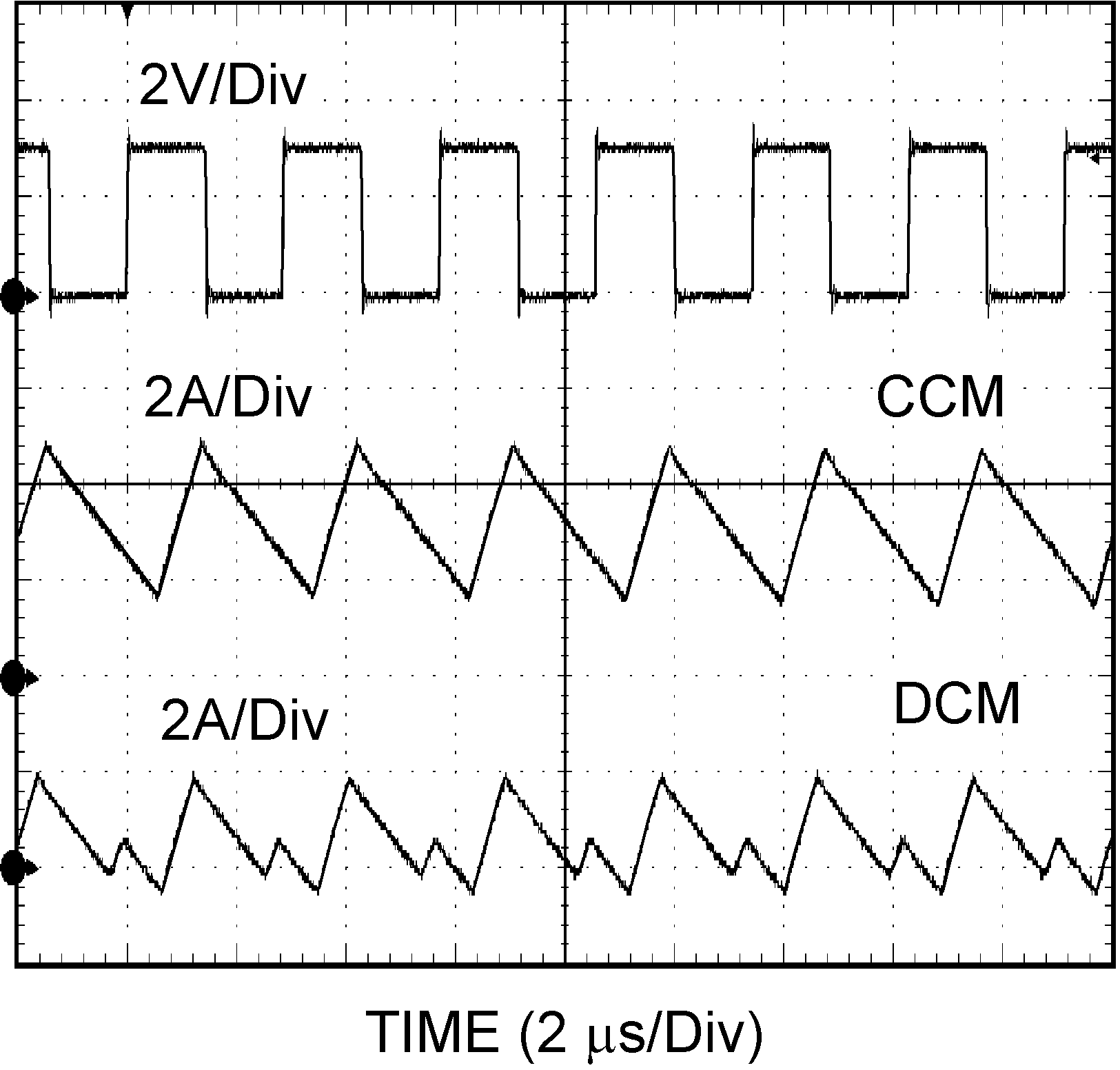ZHCS566I February 2010 – March 2022 LMZ12010
PRODUCTION DATA
- 1 特性
- 2 应用
- 3 说明
- 4 Revision History
- 5 Pin Configuration and Functions
- 6 Specifications
- 7 Detailed Description
- 8 Application and Implementation
- 9 Power Supply Recommendations
- 10Layout
- 11Device and Documentation Support
- 12Mechanical, Packaging, and Orderable Information
7.4.1 Discontinuous Conduction and Continuous Conduction Modes
At light load, the regulator will operate in discontinuous conduction mode (DCM). With load currents above the critical conduction point, it will operate in continuous conduction mode (CCM). When operating in DCM, inductor current is maintained to an average value equaling IOUT. In DCM, the low-side switch will turn off when the inductor current falls to zero. This causes the inductor current to resonate. Although it is in DCM, the current is allowed to go slightly negative to charge the bootstrap capacitor.
In CCM, current flows through the inductor through the entire switching cycle and never falls to zero during the off time.
Figure 7-2 is a comparison pair of waveforms showing both the CCM (upper) and DCM operating modes.

| VIN = 12 V, VO = 3.3 V, IO = 3 A / 0.3 A |
The approximate formula for determining the DCM/CCM boundary is:

The inductor internal to the module is 2.2 μH. This value was chosen as a good balance between low and high input voltage applications. The main parameter affected by the inductor is the amplitude of the inductor ripple current (ΔiL). ΔiL can be calculated with:

where
- VIN is the maximum input voltage.
- fSW is typically 359 kHz.
If the output current IOUT is determined by assuming that IOUT = IL, the higher and lower peak of ΔiL can be determined.